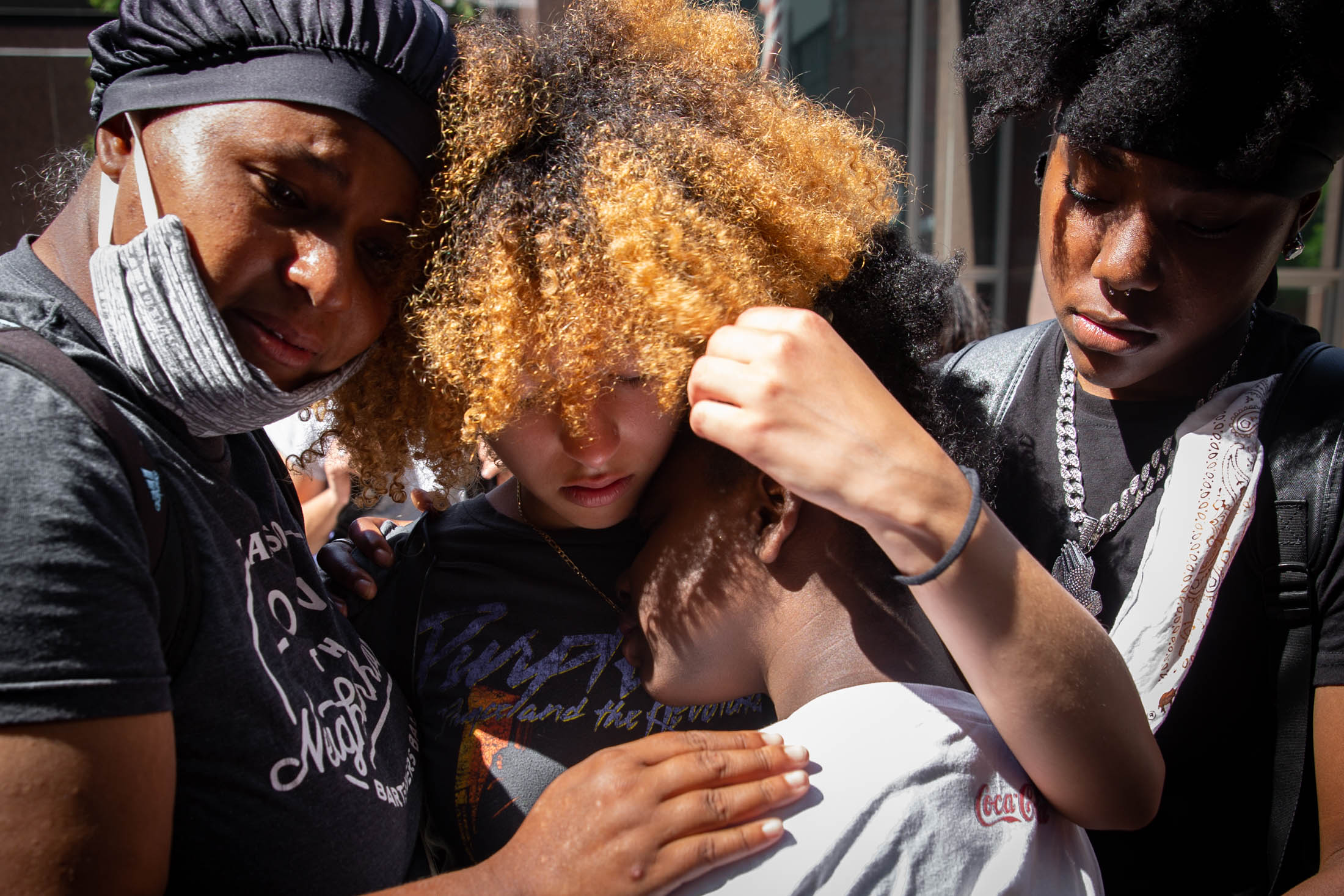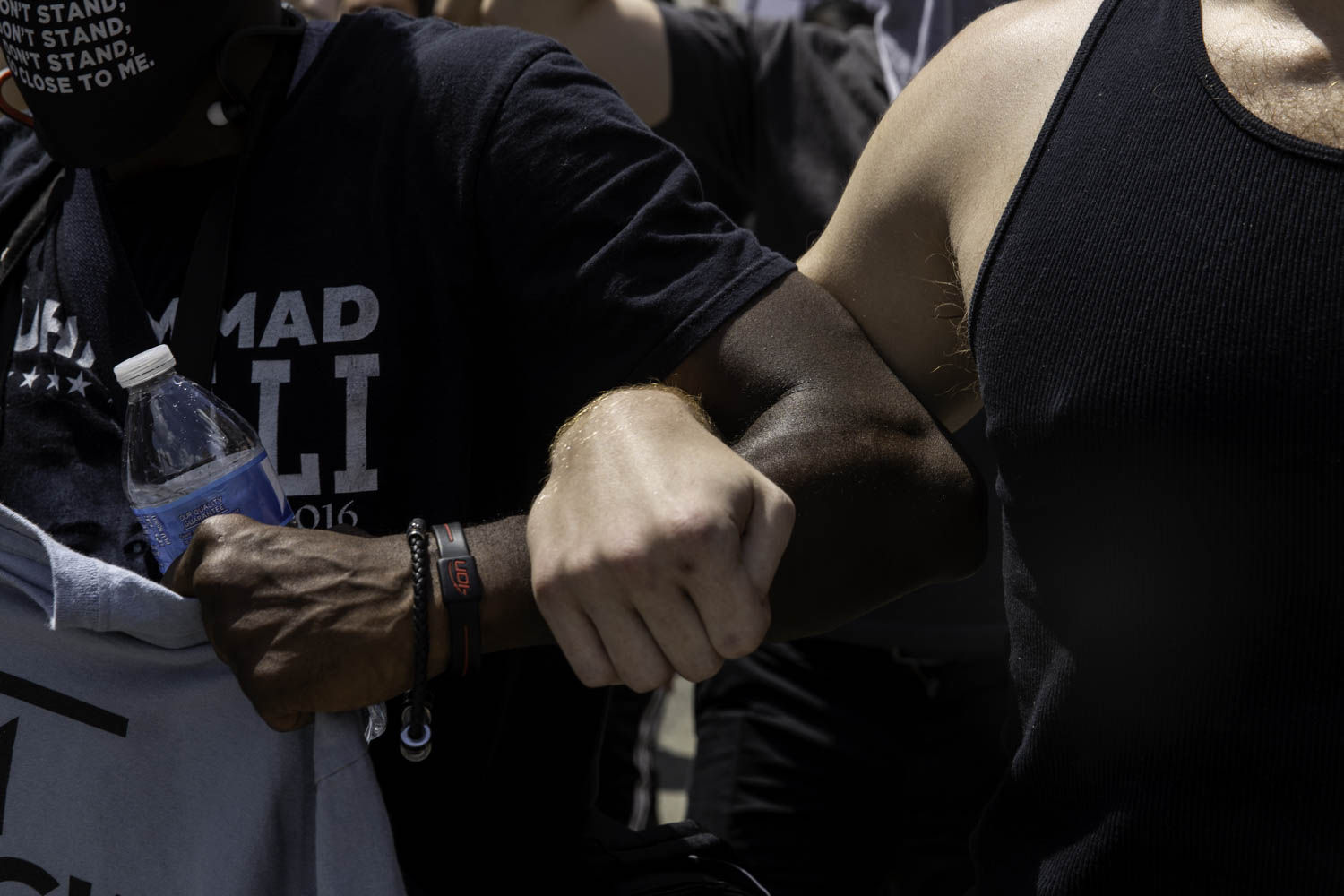
The media plays a critical role in how the public perceives protests. The words used, images published, and information disseminated directly affect public support and ultimately if and what societal and policy changes are made. For photographers and photo editors, the decision of what images to share and what to hold back matters. Context matters. Language matters.
With this influence there is a responsibility to shun simplistic narratives. A failure to recognize and respect that responsibility has real and lasting consequences.
A "protest photo" has come to evoke a specific type of image; this depiction is often an incomplete, harmful trope.
Those gathered to protest are portrayed as a single entity—"protesters"—or worse, as criminal, depraved, and a fringe group with ludicrous demands. The images centered are of sensational moments—an act of violence, a depiction of a (often Black) protester yelling or displaying heightened emotions or other some form of property destruction. We've all seen these photographs. While such an image may represent a moment, it is but part of the story.
This simplification suggests that chaos and vandalism have defined the protests, rather than the demand that law enforcement stop killing Black people.
What is often missing are quiet moments, joyous and tearful embraces, names, and humanizing details that might connect us to those who can otherwise seem unfamiliar and distant. This omission does little but characterize the experience of others as alien and unrelatable, fueling existing division, creating others, and furthering an absence of empathy.
Simplistic reporting is a failure and disservice to the American public and aids in the erosion of trust in the press. As a journalist, our first role is to hold power accountable. Beyond that, the aim is to add nuance to an often simplistic depiction of a set of societal issues that have and will continue to define our time.
Comprised of a collection of images made in Pittsburgh, Portland, Syracuse, and Rochester, this effort is about the chasm between what is widely reported and the groundtruth. It is about adding nuance, intimacy, and humanity to "protest reporting." This effort aims to challenge an industry [and readership] that prefers images and stories of unrest over those of solidarity, young leadership, and a diverse crowd showing up daily to demand a more just society.
For those sincere about wanting "real change," journalism, and especially visual journalism, must be part of the conversation.





